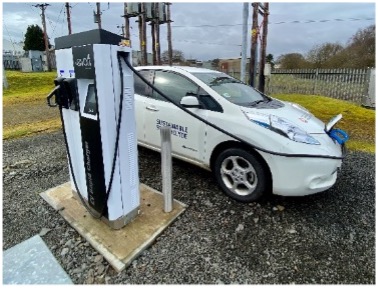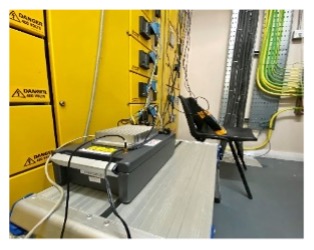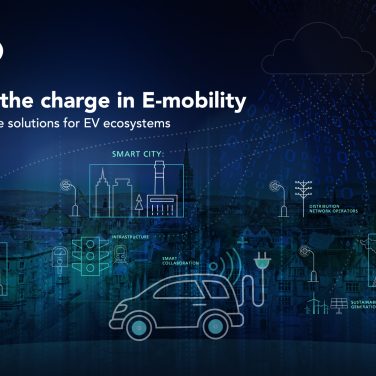The UK power industry is undergoing a fundamental, once-in-a-lifetime change. The UK government has legislated for producing net zero carbon emissions by 2050 [1], and in reducing road emissions in particular, have committed to significantly expanding the UK’s electric vehicle (EV) charging infrastructure [2]. This move towards decarbonisation is welcome and necessary, however it raises significant challenges for low voltage (LV) distribution network operators (DNOs).
EV charging units are significant power consumers. Rapid chargers, which can charge a typical mid-range EV to 80% of capacity in under an hour [3], are typically rated at 40-50 kW, with the most popular domestic chargers being rated at 7kW [4]. A 2017 study [5] recorded the average domestic EV charging event as delivering 9.1 kWh of charge, with over 400,000 events being recorded nationally each day. With this number set to rise significantly, network operators need to be able to increase power provision in LV distribution networks to allow for local increases in demand. Given the significant regional variation in the level of public EV charging infrastructure [6], and the inevitable geographical variation in domestic charger installations due to socioeconomic factors, prediction of EV charging demand in local networks would be a hugely complex task.
At Lucy Electric we have developed a state-of-the-art artificial intelligence solution to this problem, we have designed and tested a system that will provide DNOs with real-time estimates of the number of EVs charging on their network. This will allow operators the opportunity to react to EV-related increases in load, and to develop short-term planning based on observed EV usage on each LV network.
Our system falls into the category of Non-Intrusive Load Monitoring (NILM) algorithms, meaning it’s at the electricity grid level rather than in homes, and uses signal processing along with advanced machine learning methods to establish whether a change in load on the observed network is due to an EV being charged. To achieve this, we first use a fast detection algorithm to establish whether changes in the observed current and voltage signals could potentially be due to a connected EV charger. Then, we use cutting-edge deep learning techniques to establish with high accuracy whether the event is indeed due to an EV charger.
Broadly speaking, deep learning refers to a class of algorithms that can extract extremely complex relationships from large amounts of data. The common structure for these algorithms is loosely based on networks of neurons in the human brain, and their ‘depth’ refers to their typical composition of many layers of neurons, allowing for highly complex non-linear representations of the data. Deep learning is at the heart of some of the most important scientific an technological advances being made today. From determining protein structures [7] to combatting the rise of fake news on social media [8], it is being used in a wide variety of critical applications. With our work at Powerline Technologies, we can confidently expand this list of applications to include the UK’s drive towards decarbonisation.


References
[1] “Climate Change Act,” 2008. [Online]. Available: https://www.legislation.gov.uk/ukpga/2008/27/contents. [Accessed June 2020].
[2] “The Road to Zero,” 2018. [Online]. Available: https://assets.publishing.service.gov.uk/government/uploads/system/uploads/attachment_data/file/739460/road-to-zero.pdf.
[3] “EV Charging connectors – Electric car charging speeds,” [Online]. Available: https://www.zap-map.com/charge-points/connectors-speeds/.
[4] “Zap-Map EV Charging Survey,” 2019. [Online]. Available: https://www.zap-map/.com/engine/wp-content/uploads/2019/11/Zap-Map-Survey-Key-Issues-2019.pdf.
[5] “Electric Chargepoint Analysis 2017: Domestics,” [Online]. Available: https://www.gov.uk/government/statistics/electric-chargepoint-analysis-2017-domestics.
[6] “Electric vehicle charging device statistics,” 2019. [Online]. Available: https://www.gov.uk/government/statistics/electric-vehicle-charging-device-statistics-october-2019.
[7] “AlphaFold: Using AI for scientific discovery,” DeepMind, 2020. [Online]. Available: https://deepmind.com/blog/article/AlphaFold-Using-AI-for-scientific-discovery.
[8] “Twitter acquires Fabula AI,” Twitter, Inc., 2019. [Online]. Available: https://blog.twitter.com/en_us/topics/company/2019/Twitter-acquires-Fabula-AI.html.

